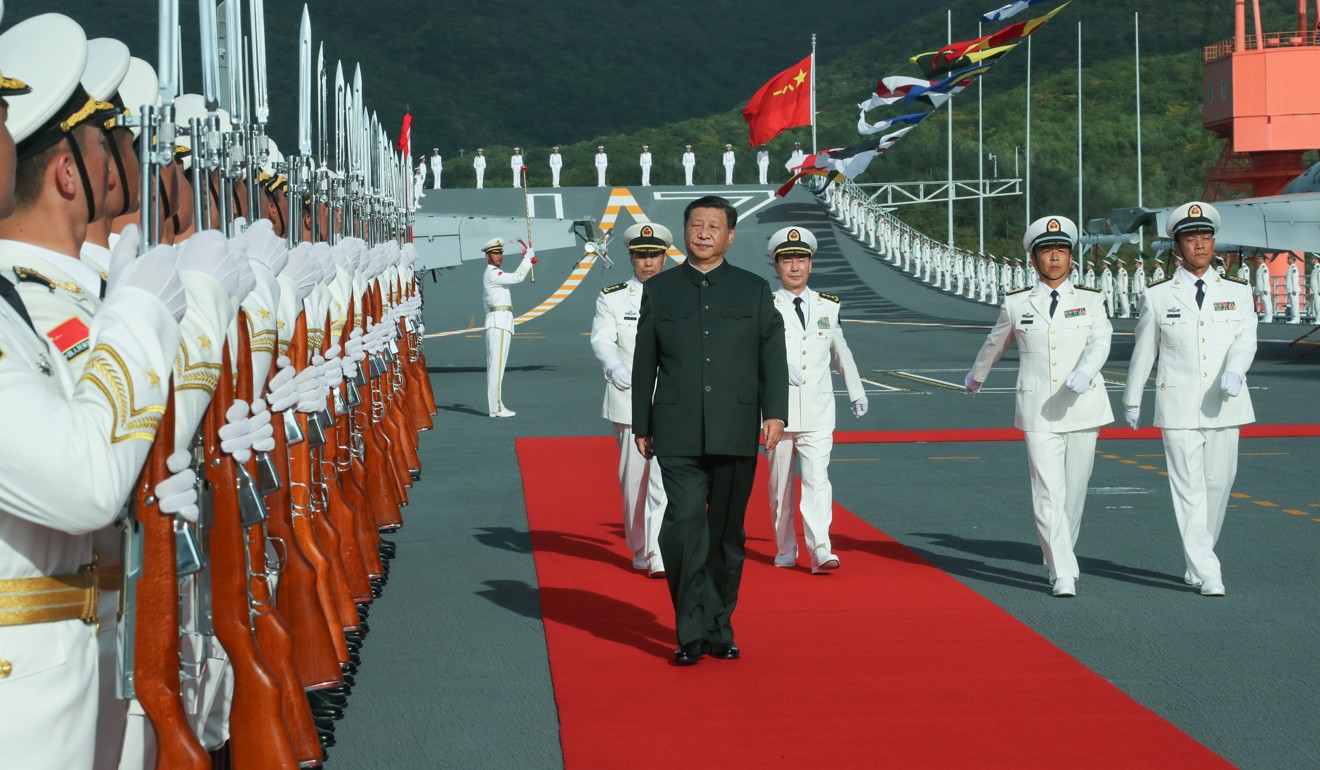
What’s in a name? A history lesson in the case of China’s new aircraft carrier the Shandong
- Warship is named after the province where it will be based, but it also carries a message aimed at reminding the PLA Navy to learn from past humiliations
- It was commissioned on the anniversary of the Beiyang Fleet, which was wiped out by the Japanese navy in 1895
But there is more to its name than just the province where it will be based.
Like the Liaoning – a Soviet-era warship that was the first in the fleet and retrofitted in the province it is named after – the new warship’s name is loaded with significance.
Underlying both is a sentimental message aimed at reminding the PLA Navy to learn from past humiliations, according to military analysts and an insider.
They say such names – and the timing of when they are announced – reflect the ruling Communist Party’s attempts to strengthen patriotism and “political education” among both the military and ordinary Chinese.
It all started with a Japanese vessel that was transferred to China in 1945 after Japan’s surrender in World War II, according to the official PLA Daily. The vessel went on to become the PLA Navy’s first warship in 1955 and was renamed the Nanchang, for the Jiangxi capital where the party launched its first armed uprising in 1927. And the precedent was set.
Fast-forward more than 60 years, and Beijing chose to commission its first home-built aircraft carrier on December 17 – the anniversary of the Qing dynasty’s (1644-1911) Beiyang Fleet.
The timing was explained in a commentary on Xiakedao, a social media account run by the overseas edition of party mouthpiece People’s Daily.
“The Beiyang Fleet was established on December 17, 1888 on Liugong Island of Weihai Bay [in Shandong]. But no Chinese should forget what happened afterwards,” the commentary read.

Against the historical backdrop, the new aircraft carrier will join the Liaoning to make Qingdao, on the east coast in Shandong, its home port.
The commentary also noted the “tremendous contributions” made by the People’s Liberation Army Qingdao naval base to the development of the new warship, including training pilots.
A military insider familiar with the matter said the provincial government had also played a key role in supporting construction of the Shandong over the past six years.
“China’s first aircraft carrier’s home base is in Qingdao, and a number of technicians and sailors working on the ship are Shandong natives,” said the insider, who requested anonymity due to the sensitivity of the issue.
“The Shandong government will be responsible for taking care of these workers and sailors in retirement, and eventually the ship will become the property of the province and could be turned into a patriotic educational museum in a few decades when it is decommissioned,” he said.
That would also be the case for the Liaoning, he added. China spent eight years refitting the Kuznetsov-class carrier in Dalian, Liaoning after buying it from Ukraine.
It went into service in 2012, and Liang Guoliang, a military analyst in Hong Kong, said that was when the top brass came up with regulations on naming aircraft carriers. They specified that all names should be provinces where revolutionary events in China’s modern history took place, he said.
Earlier regulations cover cruisers, which should also take the names of provinces, destroyers and frigates, which take city names, and landing ships, to be named after mountains, according to PLA Daily.
Chinese navy trains top guns to command expanding aircraft carrier fleet
Liang predicted back in 2014 that the country’s new aircraft carrier would be called the Shandong.
He noted the significance of both Liaoning and Shandong to the country’s navy, saying the Qing government put its first naval base for the Beiyang Fleet in the port of Lushun, in Liaoning. Both that naval base and the one in Weihai Bay in Shandong were destroyed by the Japanese.
Liang said the next two warship names could again reference events of the Qing dynasty.
“[They] might be Guangdong and Guangxi, where two significant events happened in the late Qing dynasty,” he said, referring to the destruction of opium at Humen in Guangdong in 1839, and the Jintian Uprising, an armed revolt in the Guangxi town that marked the start of the Taiping Rebellion in 1851.

